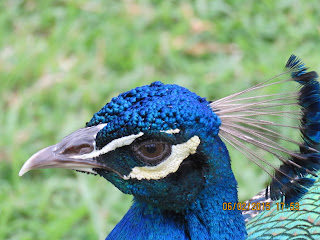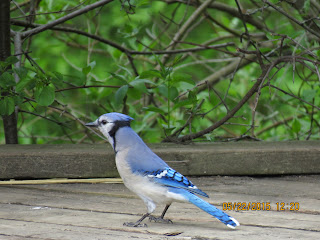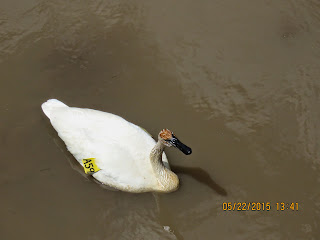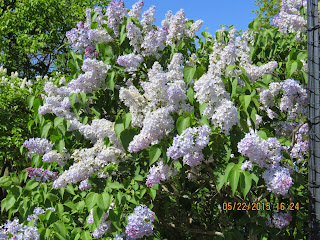Sharon and I travelled to the Royal Botanical Gardens in Hamilton, ON. Neither of us had been there before. We mostly did birding, but we also enjoyed the beautiful and spectacular Lillac Garden. We sighted and photographed the following birds:
- Blue Jay
- Female Northern Cardinal
- Blue-Gray Gnatcatcher
- Juvenile Ring-billed Gull
- Trumpeter Swan
- Black-capped Chickadee
- Mute Swan
- Double-crested Cormorant
- Caspian Tern
- Canada Goose
We also saw and photographed Chipmunks.
Today was our first sighting and photograph of a Blue-Gray Gnatcatcher. We added it to our Life List, which now stands at 115, after about 1/2 year of serious birding.
Today we took several interesting photos:
- A juvenile Ring-billed Gull eating a fish. It seemed almost too big for him to swallow, but he managed to get it down.
- The Trumpeter Swan had a marker on its wings on both sides. We reported this auxiliary marker to the USGS Bird Banding Laboratory. The Trumpeter Swan's neck had reddish-brown markings on it. After some research we determined that these are stains from the tanin and minerals in the water. The swan feeds on aquatic vegetation, tipping its bottom up to get deep plants and roots. In doing this, its neck gets continually soaked and stained from the water.
The Lillac Garden is absolutely beautiful. There are over 600 varieties of Lillacs in the garden. The Lillacs come in many different colors: purple, violet, pale violet (lillac), white, etc. It seems the holy grail of Lillac hybridization is to obtain pure yellow lillacs. This has not been acheived yet, but some of the white lillacs did have some yellow in them.
 |
| ABOVE 2 PHOTOS: BLUE JAY |
 |
| FEMALE NORTHERN CARDINAL |
 |
| BLUE-GRAY GNATCATCHER |
 |
ABOVE 4 PHOTOS: JUVENILE RING- BILLED
GULL EATING A FISH |
 |
ABOVE 2 PHOTOS : TRUMPETER SWAN
WITH WING TAGS & STAINED NECK |
 |
| BLACK-CAPPED CHICKADEE |
 |
| MUTE SWAN |
 |
ABOVE 4 PHOTOS: SANDBAR IN COOTES
PARADISE MARSH-DOUBLE- CRESTED
CORMORANTS, CASPIAN TERNS &
RING-BILLED GULLS |
 |
| CANADA GOOSE |
 |
| ABOVE 2 PHOTOS: CHIPMUNK |
LILAC GARDEN AT ROYAL BOTANICAL
GARDENS ARBORETUM
































































